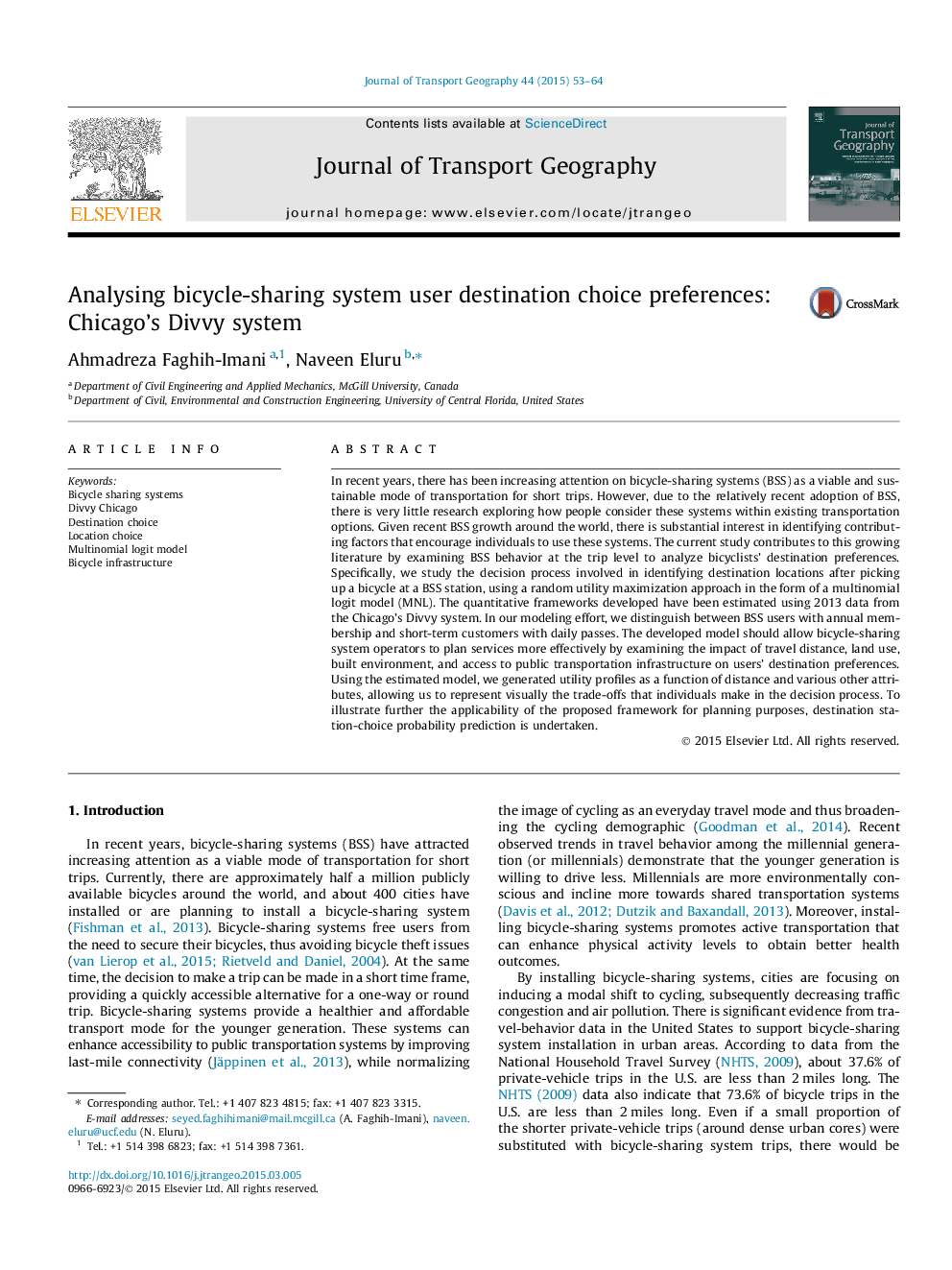| کد مقاله | کد نشریه | سال انتشار | مقاله انگلیسی | نسخه تمام متن |
|---|---|---|---|---|
| 1059038 | 1485423 | 2015 | 12 صفحه PDF | دانلود رایگان |

• Factors influencing destination choice behavior in Bicycle Sharing Systems.
• Analysis of trip level data from Chicago Divvy system.
• Separate analysis framework for members and daily users.
• Model capability illustration by providing attribute trade-offs and probability prediction.
In recent years, there has been increasing attention on bicycle-sharing systems (BSS) as a viable and sustainable mode of transportation for short trips. However, due to the relatively recent adoption of BSS, there is very little research exploring how people consider these systems within existing transportation options. Given recent BSS growth around the world, there is substantial interest in identifying contributing factors that encourage individuals to use these systems. The current study contributes to this growing literature by examining BSS behavior at the trip level to analyze bicyclists’ destination preferences. Specifically, we study the decision process involved in identifying destination locations after picking up a bicycle at a BSS station, using a random utility maximization approach in the form of a multinomial logit model (MNL). The quantitative frameworks developed have been estimated using 2013 data from the Chicago’s Divvy system. In our modeling effort, we distinguish between BSS users with annual membership and short-term customers with daily passes. The developed model should allow bicycle-sharing system operators to plan services more effectively by examining the impact of travel distance, land use, built environment, and access to public transportation infrastructure on users’ destination preferences. Using the estimated model, we generated utility profiles as a function of distance and various other attributes, allowing us to represent visually the trade-offs that individuals make in the decision process. To illustrate further the applicability of the proposed framework for planning purposes, destination station-choice probability prediction is undertaken.
Journal: Journal of Transport Geography - Volume 44, April 2015, Pages 53–64